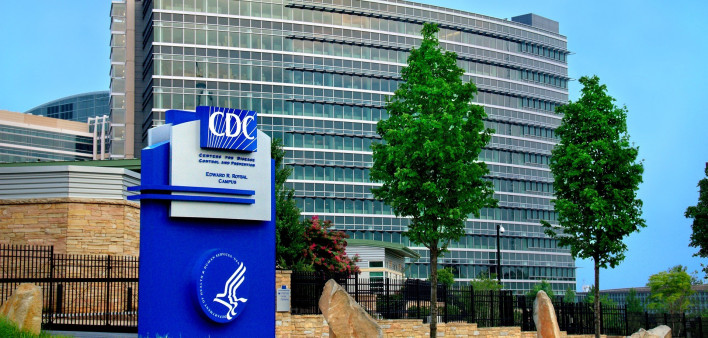The vast majority of new cases of HIV are estimated to transmit from those who are either undiagnosed or who have tested positive but are not in medical care for the virus. More than three quarters of new transmissions likely come from men who have sex with men (MSM), and the rates of transmission to others are higher among younger people living with the virus.
Centers for Disease Control and Prevention (CDC) researchers published in the Morbidity and Mortality Weekly Report findings from analysis that outline statistics regarding what is known as the HIV care continuum. The report was released on the first day of the CDC’s 2019 National HIV Prevention Conference.
The CDC researchers looked at 2016 data from the National HIV Behavioral Surveillance program regarding sexual and needle-sharing behaviors. Their estimates regarding HIV prevalence (the number of people living with the virus), incidence (the number of new infections, as opposed to diagnoses, per year), engagement in medical care for the virus and viral suppression were drawn from National HIV Surveillance System data.
The federal agency recently estimated that following about a five-year period that saw a modest decline in HIV incidence, the downward trend leveled off between 2013 and 2016. During the latter year, an estimated 1.1 million U.S. residents were living with HIV, and an estimated 38,700 people contracted the virus.
In 2016, the HIV transmission rate among people with the virus was an estimated 3.5 per cumulative 100 years. That means that for every 1,000 people with HIV, 35 new cases of the virus transmitted to others during that one year.
The researchers parsed data by subgroups along the HIV care continuum and found the following (figures are estimates):
- The 9,600 people (0.9 percent of the HIV population) who were acutely (very recently) infected with HIV and undiagnosed accounted for 1,500 new infections, or 4 percent of the total. This group, therefore, had a very high transmission rate 16.1 cases per 100 cumulative years.
- The 154,000 (14 percent) who were non-acutely infected and unaware of their infection accounted for 13,000 (33.6 percent) of the new transmissions, for a transmission rate of 8.4 per 100 cumulative years.
- The 249,700 (22.6 percent) who were diagnosed but not in medical care for HIV accounted for 16,500 (42.6 percent) of the new transmissions, for a transmission rate of 6.6 per 100 cumulative years.
- The 125,300 (11.3 percent) who were diagnosed and in medical care for HIV but not virally suppressed accounted for 7,700 (19.8 percent) of the new transmissions, for a transmission rate of 6.1 per 100 cumulative years.
- Given the fact that fully suppressing HIV prevents transmission, the 565,800 (51.2 percent) people who were virally suppressed are presumed not to have passed on the virus to anyone.

Source: CDC
Kaiser Family Foundation just released a comparison of the 2018 viral suppression rates in the HIV populations of various nations, all of them Western except for Japan, with similar epidemics. The nonprofit found that the United States placed last with an estimated 54 percent of its HIV population virally surpressed.
Breaking down their own data by different risk groups, the CDC authors found the following:
- Among MSM, 645,600 were living with the virus (58.4 percent of the HIV population) who generated 28,300 (73 percent of the total) transmissions, for a transmission rate of 4.4 per 100 cumulative years.
- MSM who inject drugs: 53,400 (4.8 percent) people generated 2,100 (5.3 percent) transmissions (2.2 transmission rate).
- Men who inject drugs: 77,500 (7.1 percent) people generated 2,800 (7.2 percent) transmissions (3.6 transmission rate).
- Women who inject drugs: 46,600 (4.2 percent) people generated 1,000 (2.6 percent) transmissions (2.2 transmission rate).
- Heterosexual men: 87,500 (7.9 percent) people generated 2,400 (6.1 percent) transmissions (2.7 transmission rate).
- Heterosexual women: 194,200 (17.6 percent) people generated 2,300 (5.8 percent) transmissions (1.2 transmission rate).
Additionally, the figures broken down by age group were as follows:
- 13 to 24 years old: 65,200 (5.9 percent) people generated 3,300 (8.5 percent) transmissions (5.1 transmission rate).
- 25 to 34 years old: 160,900 (14.6 percent) people generated 7,300 (19 percent) transmissions (4.6 transmission rate).
- 35 to 44 years old: 214,800 (19.4 percent) people generated 8,400 (21.8 percent) transmissions (3.9 transmission rate).
- 45 to 54 years old: 258,500 (23.4 percent) people generated 8,200 (21.3 percent) transmissions (3.2 transmission rate).
- 55 years old and older: 405,500 (36.7 percent) people generated 11,400 (29.4 percent) transmissions (2.8 transmission rate).
“Going forward,” the study authors concluded, “increasing the percentage of persons with HIV infection who have achieved viral suppression and do not transmit HIV will be critical for ending the HIV epidemic in the United States.”
To read the report, click here.
To read a press release about the report, click here.
To read a transcript from a media telebriefing on the report, click here.







Comments
Comments